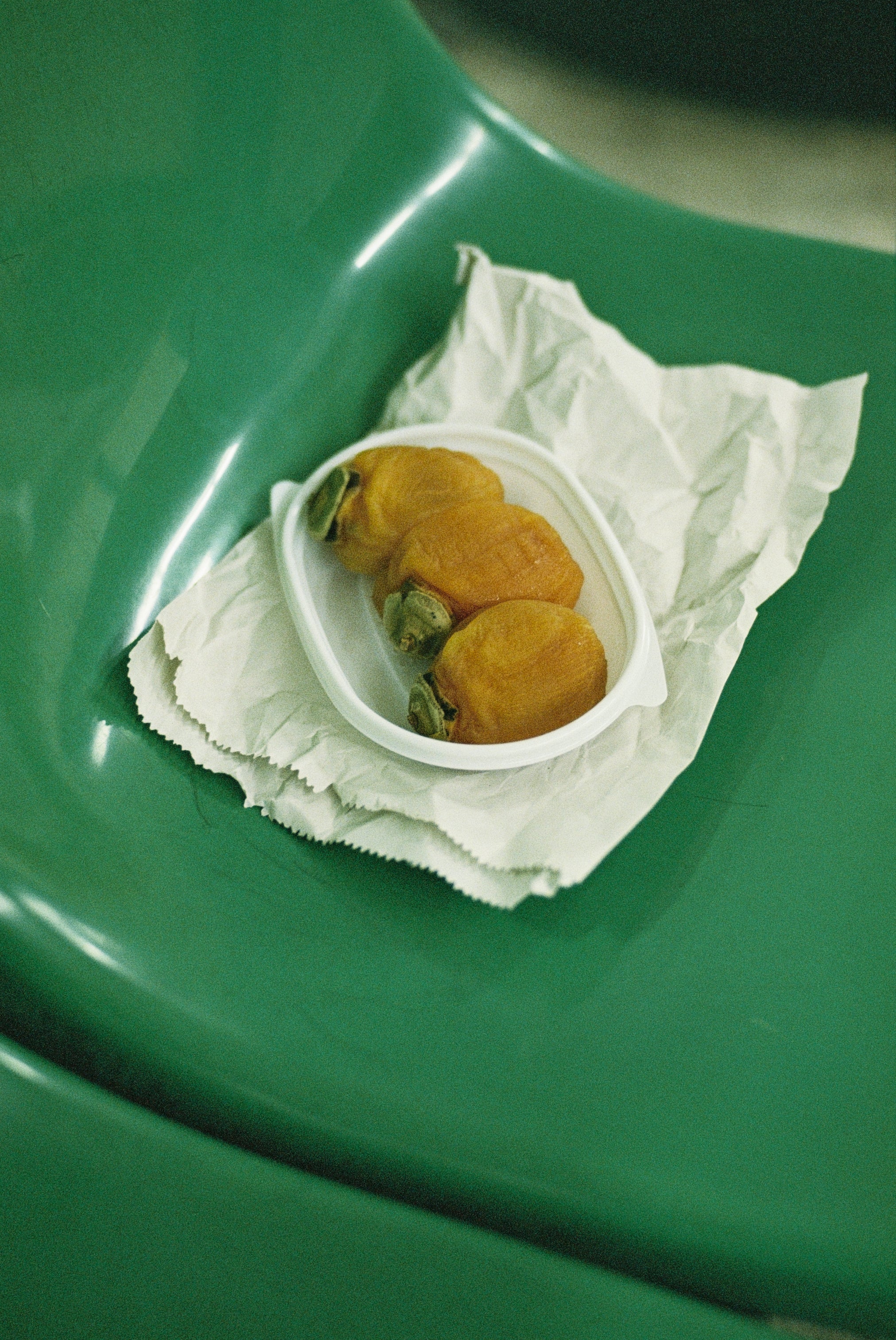
JAPÓN Día 15
por Fenn Apartamento
·
Nov 4 - Unfinished Business
Words: Sebastian + Imágenes: Araceli
Flowers are one of Araceli's favorite things to photograph. On our first stop in Kyoto, we learned about the Kyoto Botanical Gardens. Apparently a great destination for a walk and beautiful sights. This was further confirmed by the kind manager at the Stumpton Coffee by the hotel. A quick metro ride got us to the north entrance. We were full of naive enthusiasm, eager to discover all the flowers we could stare at. Soon, reality hit us in the face, it was November, and not a single flower was in sight. Branches, falling leaves, shades of yellow, yes. We laughed at ourselves and enjoyed the walk in the large park. Right by the south exit, we turn to follow the Kamo River for a few meters.


By the river's trail, runners, cyclists. On the few benches, families, and musicians. They practice here to avoid disturbing neighbors. How kind. We cross a bridge, en route to the nearest metro station to make our way to the Imperial Palace. Another tiny fruit vendor would catch our eye, probably because it was snack time. And we finally found the holy grail, hoshigaki! Araceli had been craving this ever since we arrived. We grab a box and start devouring it in the metro station. A glorious, jammy, delicious mess. Worth every stain.
The Imperial Palace grounds are huge, a big chunk of Kyoto's city center. First, we walk the grounds, there are tiny temples or shrines spread out, like mini green islands. Slowly, we reach the main palace building, at this point slowly following the flow of people, a manageable stream. We enter the premises, with a visitor tag and a map. There is a route that takes you around the lower part of the compound. Starting at the various gates and waiting rooms, then towards the ceremonial buildings, and finishing at the Emperor's quarters. As with every old building in Kyoto, this is a reconstruction after a fire. We feel however that the techniques, craftsmanship, and style haven't changed a single bit through the centuries. It helps that buildings are rebuilt every 20 to 40 years. Generations of craftspeople keep history alive. We love the different waiting rooms, three in total. Each with a different painting on the sliding paper doors. The themes of the drawings change based on the importance of the waiting room. The highest-ranking guests use the tiger room, with its own private entrance. The lower ranking in the blossom room with the middle staying at the crane room. The tatami mats also help identify status. The blossom and crane rooms having red edges while the tiger room has white edging. The red color on the pillars and wooden beams around the ceremonial courtyard is captivating. A slightly different shade of vermillion, we love it. The Imperial lodgings have their own private garden, of course. Created in a way that each angle is a picture frame, the small area feels much larger. With this, we finish the tour, impressed and pensive. Everything felt luxurious and yet it was very sparse, minimal. It felt like a palace but didn't match the image we come up with when we think of palaces in other countries. In conclusion, we prefer the humbler, toned down palaces of the East.




With the imperial temple behind us, we make our way to a tea room/gallery that had intrigued me since I read about it in the Monocle Guide to Kyoto. I had a feeling it was the kind of place we needed to book beforehand, but we decided to risk it anyway. It was on our path and we had nothing to lose. We arrive at Tea Room Toka, a renovated Kyoto townhouse, past the entrance gate, across a few paving stones. We open the sliding door and wait at the receiving area. We hear movement but don't see anyone. We decide to step in, after removing our shoes of course. The first room is a gallery, where they sell items all related to the enjoyment of tea. Tea pots, cups, caddies. They source their own tea from tiny farms around Kyoto, looking for Zairai strains, the original unmodified tea seed that arrived in Japan from China. They recently launched their own craft cold brewed tea as well. We ask if there is a spot in the tea room. Of course, they reply, lucky us! We take our seats and immediately we feel we are in for a treat. I was mesmerized throughout the whole experience. We get to choose two teas, seeing on a beautifully printed menu the different profiles. Once chosen, we get to smell the tea leaves in a warm teapot. The tea is then expertly brewed, twice, so that you get different profiles with each sip. The wagashi snacks, Kyoto's traditional sweets, are to die for. Soft, barely sweet, full of flavor. Even the rice crackers at the end have a different crunch to them. The experience inspired us a great deal, it is humbling to see people taking their craft very seriously and creating a serene experience around it.

A promise is a promise, and we decide to head back to Osugi Shoten and make good on our word. The kind Osugi San received us with a smile. We quickly settle on a small vermillion lacquer plate, with apparent brush strokes. This will be our record of him for this trip. We promise to come back on our next visit to Japan, and get another item from him.
By the time we arrive at the hotel, we are tired but hungry. We decide to try out their newest restaurant. A westernized farm-to-table concept, Japanese ingredients, international interpretation. The meal is more upsetting than filling. Each dish is bland, without impact. We wonder how can one create such food when there are so many incredible ingredients in the country.